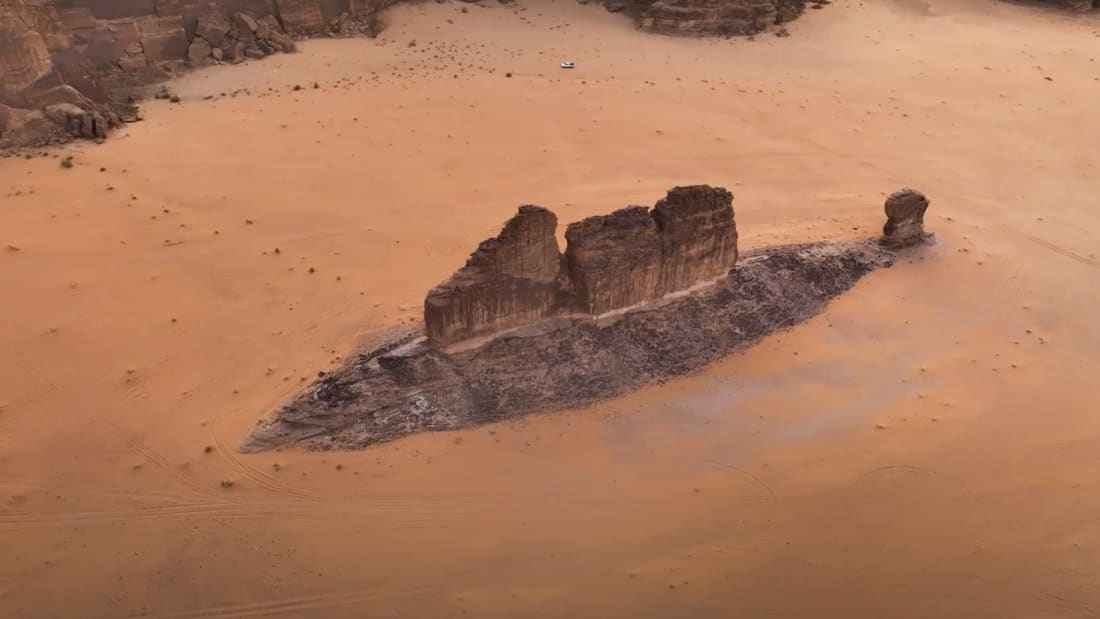The recent discovery of a giant fish-shaped rock emerging from the sands of the Saudi desert near Al-Ula adds to a growing collection of natural wonders in Saudi Arabia.
The discovery was made with a drone by Khaled Al Enazi while recording the archaeological treasures of Saudi Arabia’s Al-Ula county, according a report in CNN.
“While I was documenting the area, a view of a mountain appeared in front of me, its shape suggesting a fish in the heart of the desert,” he told CNN via email. He added that he’s probably not the first person to encounter the rock formation, but he believes his aerial perspective meant he was the first to note its curious shape.
“A photographer’s eye sees what people do not see,” he said.
The photographer fittingly named the rock Desert Fish.
‘Desert Fish’ is the latest in a growing number of natural wonders and heritage sites being discovered and in many cases developed or restored by Saudi authorities, hoping to attract droves of tourists to the Kingdom.
Saudi Arabia’s Heritage Commission announced the registration of 67 new archaeological sites at the National Archaeological Register (NAR), bringing the total number of documented historical sites across the Kingdom to 8,531, a recent report in Al Arabiya said. The new sites included 15 that were registered in the Northern Borders Region, 13 in Tabuk, 10 in Hail, nine in al-Jawf, five in al-Qassim, four each in Riyadh and Asir, three each in al-Madinah and al-Baha, and one in Mecca, according to the Saudi Press Agency (SPA).
The photographer is currently working on creating his own YouTube channel dedicated to documenting the Al-Ula region and its fascinating landscape, CNN said.









